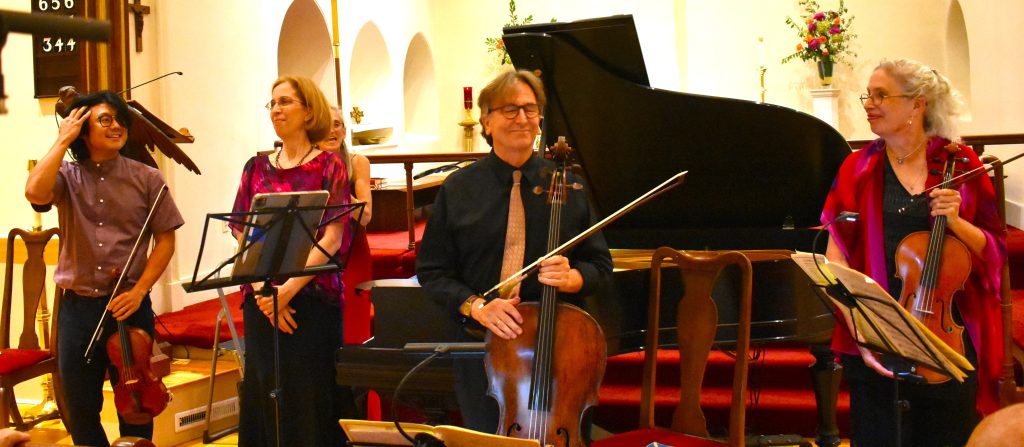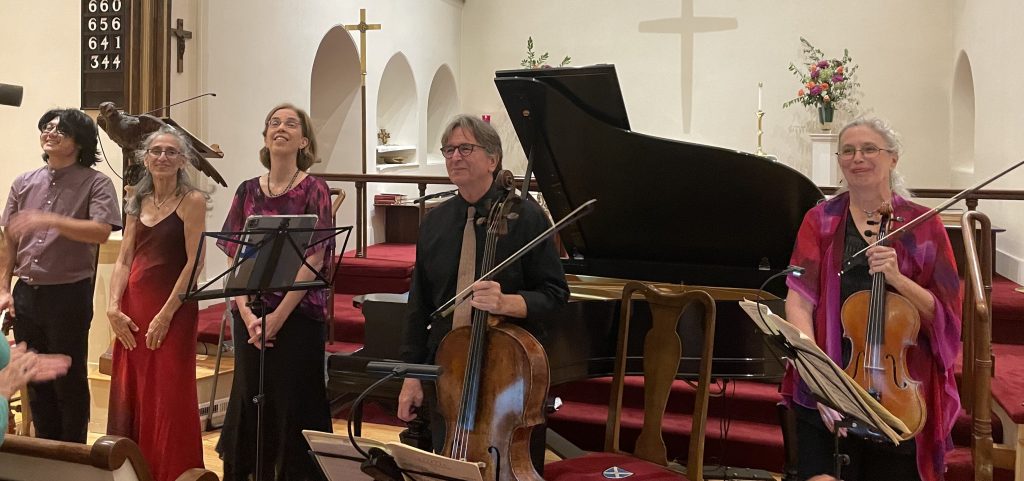
by Kevin T McEneaney
An all-Fauré concert last Friday by the Sherman Ensemble in Kent at St. Andrew’s Church delivered an unusual program that was a special happening. The concert was titled A Hidden Genius: A Foray into Fauré; the concert was more of a delicious banquet than a brief foray, although time seemed to pass so swiftly amid such engaging music.
When one thinks of nineteenth-century German music, it is obvious that the piano and violin stand out as the noted stars, yet it might not be so obvious that in France the flute and piano are the guiding stars. That explains why in general France prefers elegant sophistication over thunderous excitement.
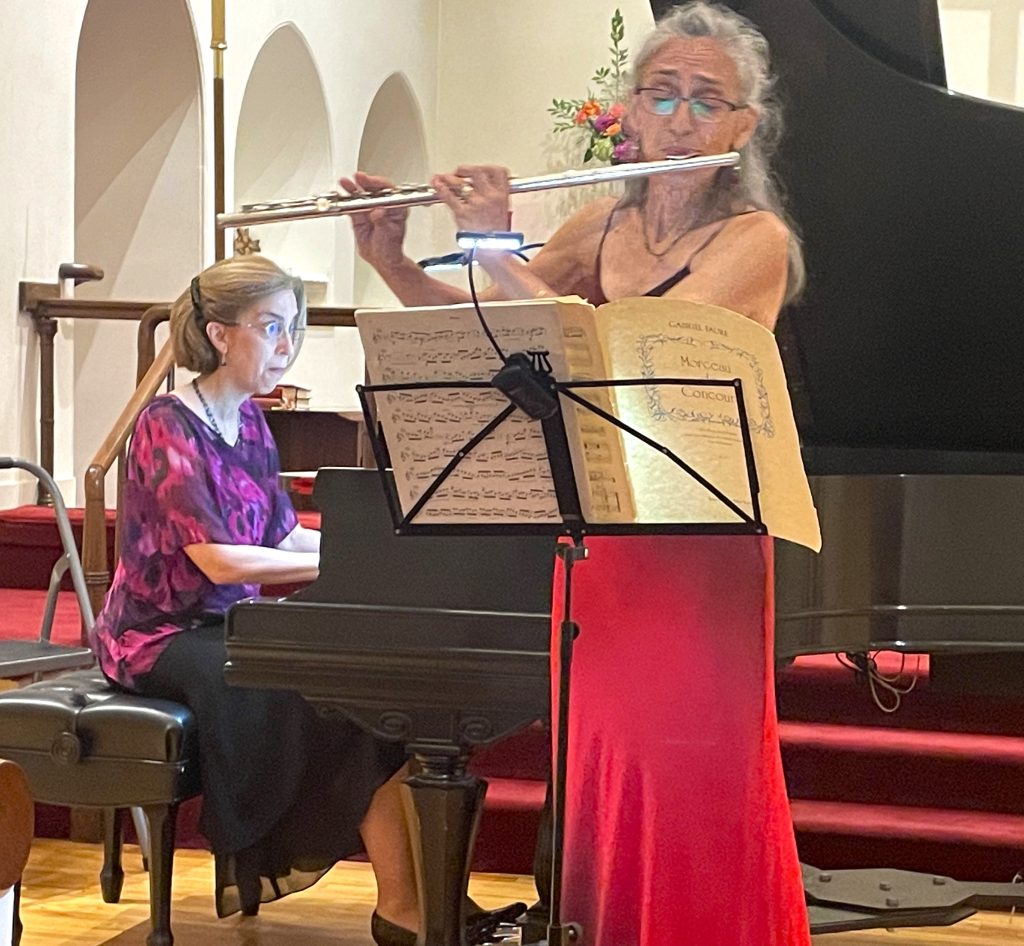
Susan Rotholz on flute and Margaret Kampmeier on piano opened with an 1898 flute exam exercise invented by Gabriel Fauré when he was Director of the Paris Conservatory. The first part, Morceau de Concours for flute and piano, was an exam exercise to showcase the technical skills of the student flutist through the varied hurdles of scales arpeggios, and mordents. The second part, Fantasie for flute and piano, tests the student’s ability to embellish aesthetic inflection through modulation. Despite being an exam, it remains a charming work. Susan Rotholz on flute amusingly recalled that she had to perform this test at Juilliard School; she recalled that she received an A-minus, yet her amazing and delightful rendition here was the maximum full A!
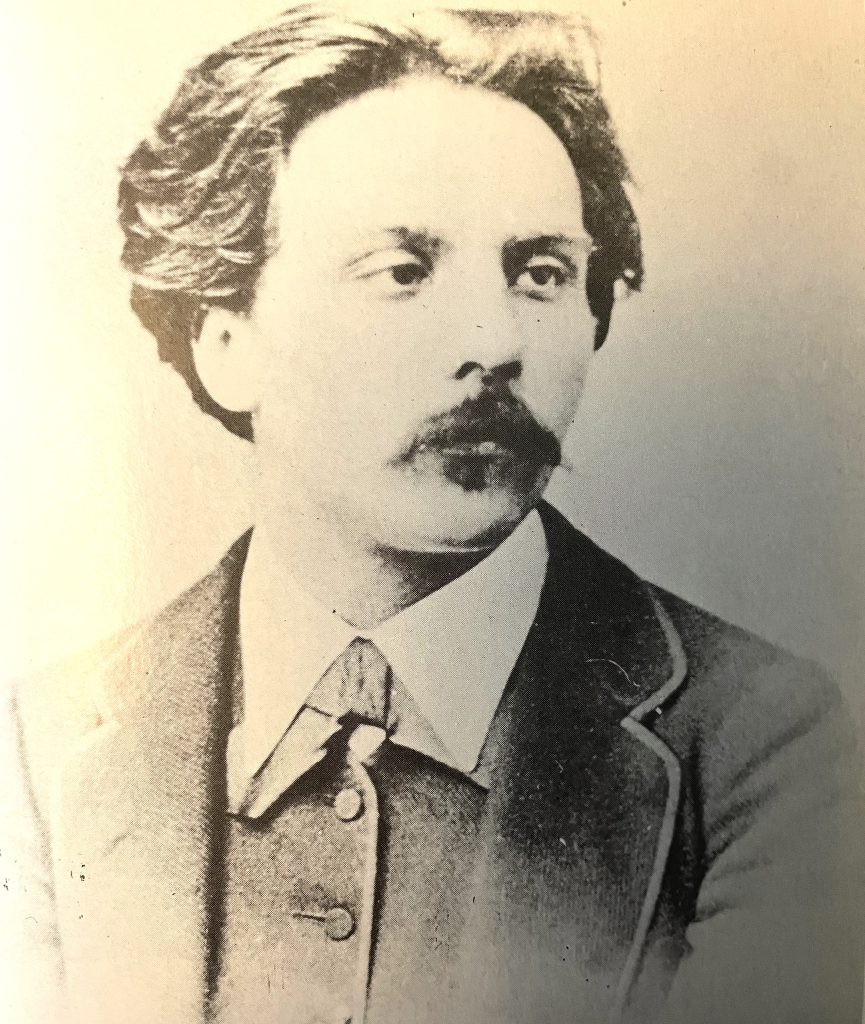
Debussy and Ravel were the best students of Fauré (just as Fauré was the best student of Saint-Saëns). One year before his death, Fauré composed his Piano Trio, Op. 120 (1923), after his star students completed their first piano trio. (Teldec publishes a CD of all three trios for comparison, Fauré’s being four to five minutes shorter.) The suggestion that Fauré compose a piano trio came from Fauré’s publisher Jacques Durand.
The opening Allegro offers a slow climb in modified sonata form that reaches an astonishingly scenic climax, as if one reached a glorious mountain-view summit. With a long, resonant singing theme Eliot Bailen on cello appeared as if he was doing all the footwork of the climb and he was in no hurry to arrive at the top. On piano, Margaret Kampmeier appeared to the cheerful soul encouraging both the cello and the exciting violin of Doori Na, who seemed to be the visionary “eyes” on the landscape ahead. The unified celebration at the top was thrillingly beautiful!
The longer Andantino that follows appears to invoke memories wherein Eliot Bailen’s cello inveighed deep lament before happier memories ascend with the guidance of the piano and flower in the sweetness of Na’s violin. The concluding mellow Allegro interweaves all three instruments into an aesthetic Gordian knot of such impressive joy that astonishment smiled on every face in the audience!
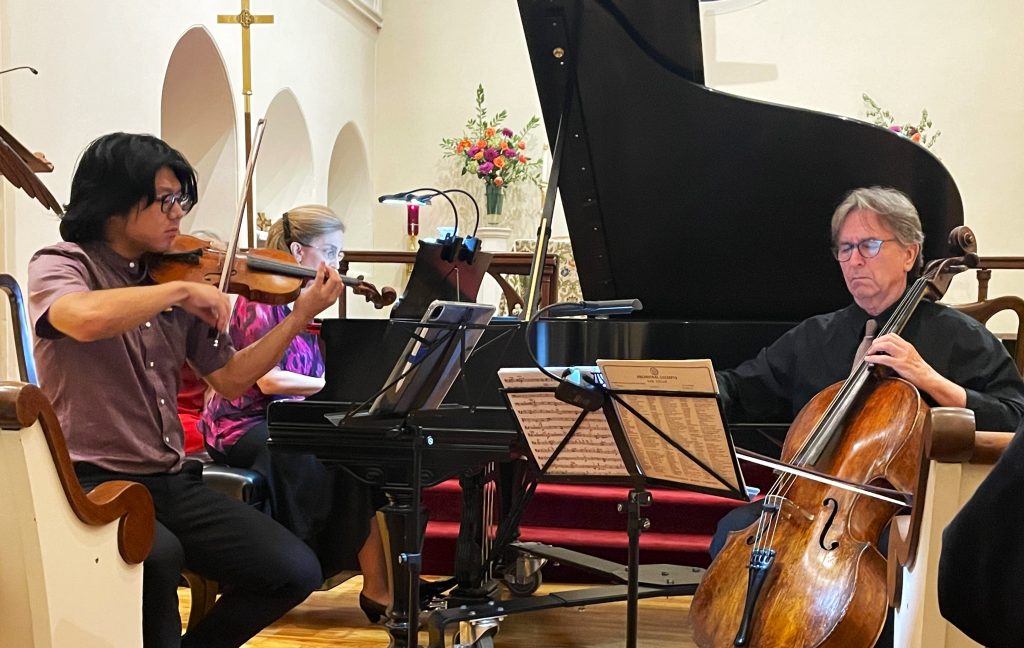
Sicilienne for flute and piano, Op. 78 (1893), originally composed for cello and piano, yet here played with violin, delivers that exhilarating rhythmic charm brought by Romana gypsies to Sicily. The rhythmic eloquence of Kampmeier on the piano and the breathless high-pitched energy of Na’s violin projected impressive exuberance!
Quartet for Piano and Strings, no. 1, in C minor, Op. 15 (1876-1883) opened impressively with Bailen’s cello meandering and meditating while on piano Kampmeier delivered idiomatic drama as Na’s violin provided an icy touch. We were stuck in the season of Winter. Yet at the conclusion of the Allegro, there was some gentle, hopeful, remission from the cold.
The following Scherzo dramatized the fickle nature of Spring and here the viola played by Sarah Adams offered rounded nuance. Violin and piano energetically enjoyed the surprising aspects of Spring while the cello remained dutifully skeptical about the weather. The long Adagio celebrated the glories of the Summer landscape where Adams added much color, yet the movement ended with tender, elegiac mode, lamenting that Summer was over. The concluding Allegro reflected on memories as it acclaimed the robust abundance of the bracing season. The unified sound of all four players was impressive!
I confess that Fauré is one of my favorite composers. Whenever I hear a substantial and dedicated performance of his work, I feel physically and mentally healed. The brilliant instrumental interweaving of melodies is likely a talent that originates from his youthful years when he was the most sought-after organist in France to perform Bach (before he began to compose).
